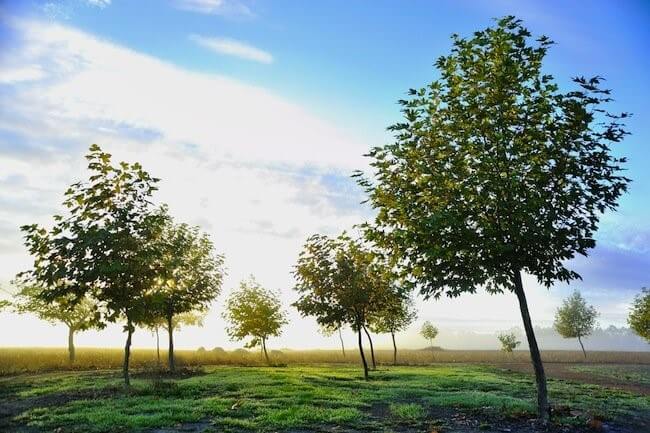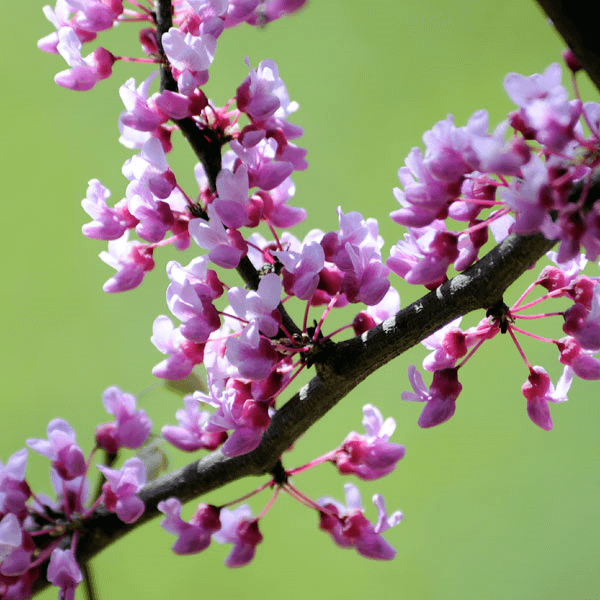Are you considering planting a tree this spring? If so, we’ve got some helpful tips for how to care for your young trees.
Tree Selection
Selection of the right tree for your space could be one of the most important factors in your tree’s long-term success. There are several things to consider when selecting a tree for your property.
- Location. Does this tree do well in our area? While Blue Spruces and White Birches are beautiful, they tend to not do very well in our area and would have better success in other hardiness zones.
- Structure. The best structure for a tree is with one central leader. Competing leads can cause breakage and problems when the tree matures. You can avoid a lot of problems by selecting a tree with the proper structure from the beginning.
- Space. Your baby tree is little and cute now, but how big will it get? Do you have space for this tree when it matures? Too often, we see trees that need to be removed because they are competing with fences, houses, or power lines.

Proper Tree Planting
Yes, there is a right and wrong way to plant a tree. Believe it or not, planting your tree too deep can suffocate your tree. The root flare should be above the ground. Oftentimes, you will get a tree that is already too deep in its container or ball and burlap. Remove some of the dirt in the root ball before planting so that you can locate the root flare. Learn more on how to properly plant a tree.
Mulch Rings
A mulch ring around a tree is something we are always recommending to our customers. The wood chips mimic a natural forest floor and as the wood breaks down it adds nutrients to your soil. A layer of wood mulch also retains moisture in your soil, so it is more difficult for your tree to dry out. In addition to these things, mulch can also act as a buffer in extreme temperatures.
There is a proper way to add a mulch ring to your trees. If done correctly, the benefits are tremendous and look great too!
Water! How Much Water Does a Tree Need?
Lack of water is one of the biggest killers of young trees. Especially as your tree is getting established, it needs plenty of water to thrive. And yes, trees still need water in the winter!
Below is a chart of recommended water amounts for your trees if we don’t get a lot of rain:
Good slow soaking (10-15 gallons per every 5” diameter of tree trunk)
- 80+ degrees = every 3rd day
- 65-70 degrees = every 5th day
- 50-60 degrees = every 7th day
- 35-45 degrees = every 14-15 days
Fertilization
Fertilizing your trees is a great way to help them establish in their new space. Planting is stressful on trees and a lot of their reserved nutrients are being used to overcome that stress and grow new roots. On top of this, many of our yards do not have leaf or twig litter, like a natural forest floor, which breaks down to provide nutrients for the trees.

Structural Pruning
Sometimes a tree is planted that needs some structural pruning. Our goal is to have one central leader to avoid codominant stems and unwanted breakage. We can begin a special type of pruning for certain trees called subordinate pruning. This will encourage more growth on our selected lead and reduce growth on the lead we select.
Continued Inspections and Maintenance
Keep a trained eye on your trees throughout their life. Trees are an investment and need continued maintenance throughout their lifetime to keep them healthy. Pruning is necessary to remove natural deadwood as the baby tree grows. Some trees are more prone to insects and diseases and should be monitored for any necessary treatments.
These are all services that Cherokee Tree Care offers. We fully believe in preserving trees for the next generation to enjoy. The young tree you plant now could be here for many years down the road if it is cared for. Call your arborist today to see how we can help your young or old trees.

